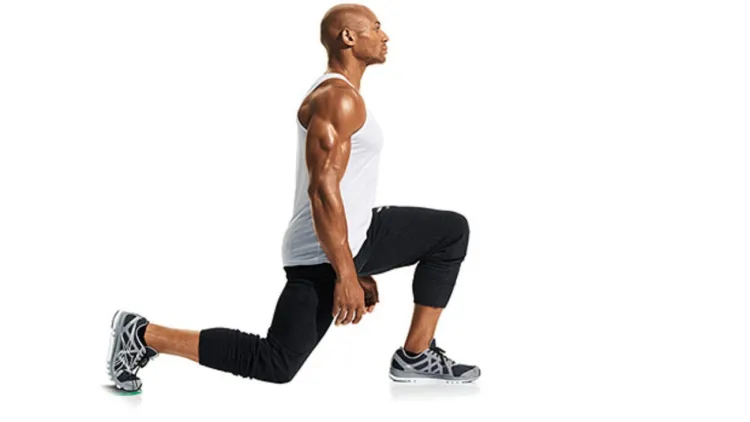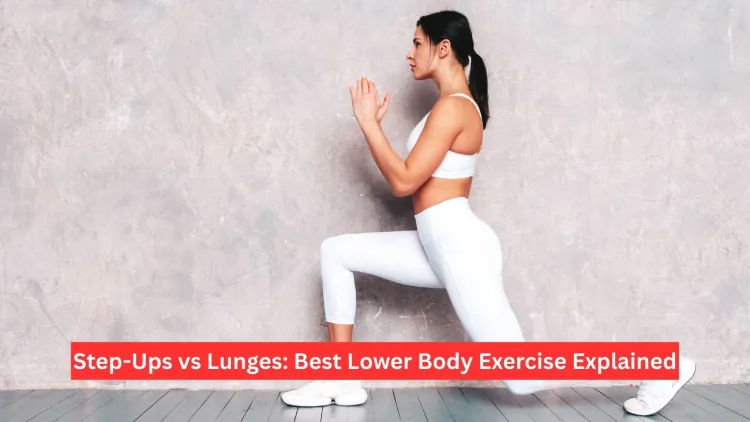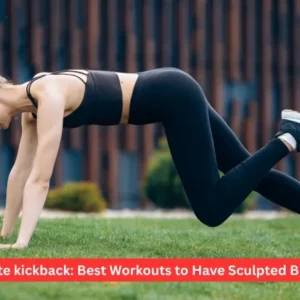Exercising your legs and lower body can be done quickly with lunges and step-ups. Working on these exercises can help strengthen the glutes, hamstrings, front thighs and calves. Is it better for you to do cardio or strength workouts? Here, we’ll explore how step-ups vs lunges differ, discuss their positive and negative sides and share a training plan for your lower body to help you get the best results.
What does it mean to do step-ups vs lunges?
They make you work several parts of your body at one time. Because exercises like these build the glutes and the front and back thighs, they have to be done to target the lower body. Therefore, they are very useful for gaining muscle, boosting your balance and improving your coordination. Squats and lunges may appear the same, but they rely on different muscles and are carried out differently.
Step-ups:
With a step-up, you stand on a raised surface with one leg, then lift the other till they are together, then lower it to the floor and continue the movement. Together, legs are strengthened, balanced, stabilised and healthy through squats and lunges. It resembles walking up stairs, so it can help in numerous everyday situations.
Lunges:
A lunge includes bending your knees, moving one leg out and coming back to your original spot. Since a lot of balance is required, this exercise concentrates on strengthening the muscles in the quadriceps, glutes and hamstrings. Reverse lunges specifically help avoid injuries, increase your flexibility and improve your strength and balance during activities outside. The lunge can be done in several ways that each engage varied parts of the body and make different movements.

The muscles that are used similarly and have differences
Similarities:
Both exercises mainly focus on exercising the quadriceps muscles, found on the front of the thighs and tasked with extending the knee.
- Hippies: Both step-ups vs lunges activate the gluteal muscles, which are made up of the gluteus maximus, medius and minimus muscles. They help in both extending and supporting the movement of the hip.
- Half Legs: Squats and deadlifts strengthen the hamstrings on the back of your upper legs. They contribute to going down on the knee as well as straightening the hip.
- Working your calves is important, as they help with all variations. Step-ups vs lunges are especially useful in pushing the body upward.
Differences:
- Activation of the Trunk: You need to stabilise your trunk more during a lunge, as opposed to just lateral crunches, due to maintaining balance on your single leg. Because you perform a lunge unilaterally, it is good for activating and strengthening the back and side muscles of the trunk. Another difference is that lunges engage the adductors and abductors, but step-ups mainly work the muscles in the front of the thigh.
- Hip flexors: Great stress on the hip flexors is placed by reverse and lateral lunges. As a result, you can boost the range of movement and flexibility in your hips, which is not as noticeable in step-ups.
- Singular training: Lunges quite effectively work one leg at a time, so they are ideal for addressing any differences between your legs. Step-ups use both legs, however, the effort is more balanced depending on the place you start and how you perform the exercise.

Step-ups vs lunges have positive effects on the heart.
Performing step-ups and lunges many times or in a circuit workout gives your heart a good cardio workout. Doing step-ups builds stamina, balance and overall strength in the lower body.
Step Up:
- If you perform step-ups quickly and with extra weights, they can rapidly increase your heart rate. Because you have to step up and down all the time, this exercise offers a continuous boost to your cardiovascular system.
- When you step up, you effectively practice climbing stairs, so it can improve both your heart and your strength for everyday tasks that involve stairs.
Lunges:
- High-intensity training: You can put lunges into HIIT sessions, mainly when practising the walking or plyometric forms. It helps you strengthen your muscles and improves your cardiovascular fitness greatly.
- Various Lunges: Lunging in several directions strengthens your heart, improves your flexibility and helps make you more coordinated, all while toning your muscles and giving a good cardiovascular workout.
Benefits and Disadvantages of Workouts for Leg Strength
Step Up:
- The step-ups are beneficial for improving strength in the lower body, helping with balance and boosting agility.
- These exercises are beneficial for your quadriceps and glutes, and you can make any climb easier or harder by simply changing the height of the step or the weight you lift.
- Step-ups improve the strength of your legs, something you need when transporting equipment for exercise. Performing step-ups is useful since it boosts your endurance when walking or climbing stairs.
- A downside of step-ups is that if your posture isn’t right, your lower back and knees may be in danger of injury. Some workouts are done outside and might not offer a sturdy platform to use.
Lunges:
- You can perform lunges in many directions to effectively strengthen your legs and buttocks. They work effectively to align muscles and boost the range of motion at the hips.
- Standing upright in the upper body allows you to balance and prevents you from getting hurt while lunging.
- Lunges also help to strengthen your core by giving it an extra workout because of their balancing aspect. If you do lunges incorrectly, you may place too much pressure on your knee tendons.
- True, learning how to do this is not always easy at the beginning, and newcomers should concentrate on their execution to prevent harm.

Learning the right method for including step-ups and lunges in your workout.
You can incorporate both exercises into your exercise routine, depending on what you want to focus on.
Step-Ups:
- You can add step-ups to your cycle of strength workouts or for cardio. The exercises can be done on steps, benches or boxes. To carry out step-ups:
- On either a box or a bench, place your foot and stand upright.
- Step upwards using only your heel as you get positioned on the box or bench.
- Step onto the floor with your right foot and repeat for as long as you want.
Lunges:
- Any workout can benefit from including lunges, as they are easy to do. By working in different directions, you can focus on various parts of your body. The idea is to perform a lunge.
- With your feet together, step far ahead with one leg.
- Lower your back knee until it comes near the ground.
- Stand on your toes and lift your front heel to go back to the original pose. Keep scraping and sanding away the first coat of paint on the other half of the wood.
Is it better to exercise with step-ups or lunges?
The choice is usually based on your aims and likes. Step-ups work your legs and glutes, and you can increase their difficulty by making your step higher or placing some weight on it. Playing like this also resembles putting one foot after another on a staircase. Lunges improve your balance, help you become more flexible and straighten out any muscle problems. When doing lunges, you gain more flexibility and can stretch your range of motion more effectively.

Solution
The type of exercise that suits you best is normally based on what you want to achieve personally. Step-ups are effective in building power, whereas lunges assist in improving how well you can move and balance. Together, legs are strengthened, balanced, stabilised and healthy through squats and lunges. Experiment with each exercise in many forms to discover the one you like the most. The weekly workout plan will allow you to build a strong and balanced lower body and also contribute to your athletic development.
Frequently Asked Questions
1. What muscles do step-ups and lunges target?
When you do step-ups or lunges, your main muscles focused are the quadriceps, glutes, hamstrings and calves. Unilateral lunges make your hip flexors, adductors and abductors work more energetically.
2. Which is better for cardio: step-ups or lunges?
To focus on cardio, do step-ups fast or add weights, as this activity resembles climbing steps and increases your heart rate throughout. High-intensity lunges and those done in a plyometric style are effective at strengthening the heart.
3. Are step-ups or lunges better for beginners?
Step-ups are easy for beginners because they are more stable, and the height of the step can be chosen. As lunges are more about balance, you might need to pay more attention to how you do them to avoid injuring your knees.
4. Can I include both step-ups and lunges in my workout routine?
Yes! To improve your lower body, make sure to practice both exercises. Step-ups benefit your strength and stamina, and lunges can help with balance, flexibility and correcting any muscle issues.








2 thoughts on “Step-Ups vs Lunges: Best Lower Body Exercise Explained”
Hello! Would you mind if I share your blog with my myspace group? There’s a lot of people that I think would really appreciate your content. Please let me know. Thank you
Of course! Feel free to share it with your MySpace group. I’d really appreciate it—thank you so much!